Abandoned derelict places in the world’s richest cities
Abandoned sites of the world's wealthiest cities
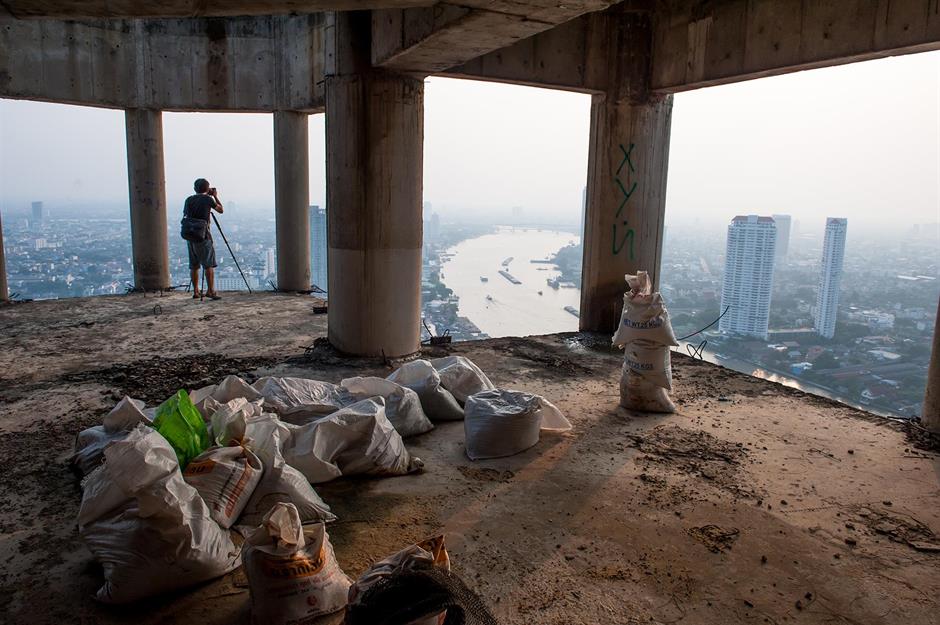
Some of the world's wealthiest cities are known for their historic buildings, others for dazzling skyscrapers. But even the most impressive skyline has its secrets...
From disused stations to long-forgotten theme parks and an abandoned airport, read on to discover derelict places lurking in some of the richest cities on Earth. All dollar values in US dollars.
City Hall Station, New York, USA
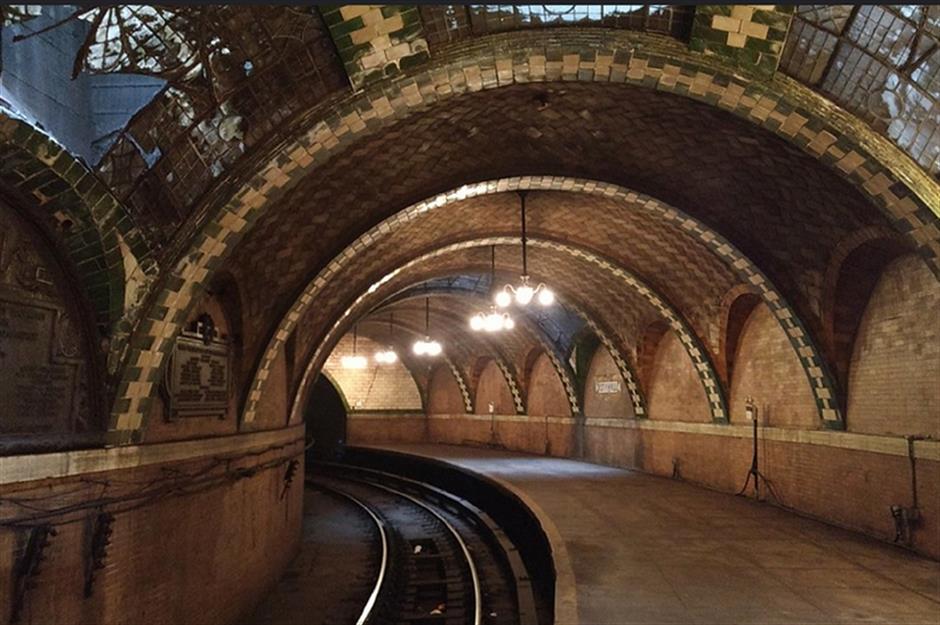
Designed to be a key station in New York's subway system, City Hall Station was first opened in 1904. Boasting glass tiles, brass fittings, and chandeliers, it was far more lavish than the other stations. But by 1945 it had fallen into disuse as new train models were too small for the large gap between the doors and the platform. The elaborate station still lies abandoned to this day.
Spreepark Amusement Park, Berlin, Germany
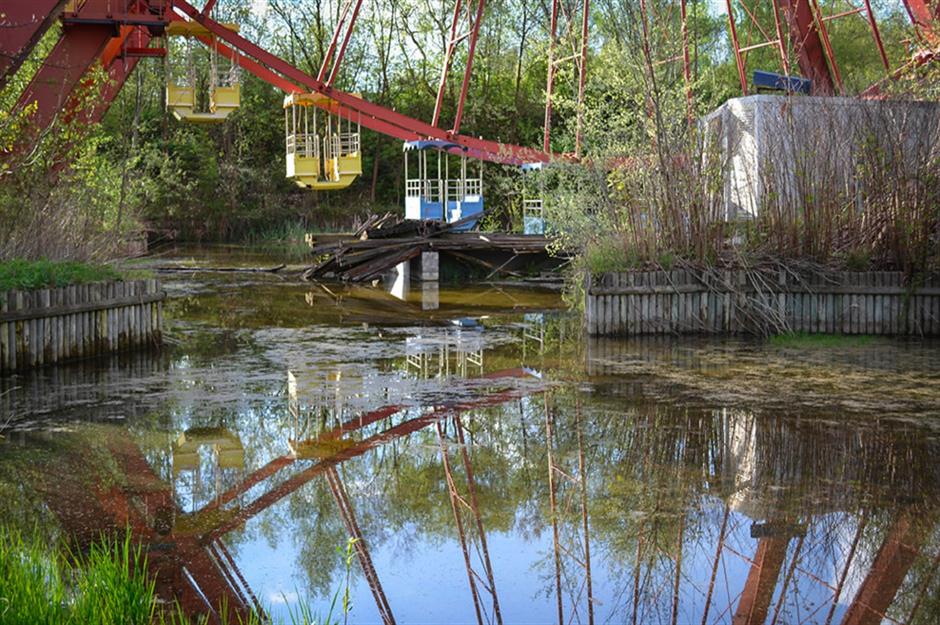
It's been a bit of a rollercoaster ride for Spreepark in Berlin, a once-thriving amusement park that was built by the German communist government in 1969. After decades of popularity, the park started to fall out of favour in the 1990s and was taken over by Norbert Witte. In 2003, however, Witte was jailed.
Although the city bought the park back for $2.2 million (£1.8m) in 2014, it remains abandoned and is now mainly visited by urban explorers and photographers. New plans to revive it as a theme park have recently been unveiled, but it's unclear how far these plans have progressed.
Foreshore Freeway Bridge, Cape Town, South Africa
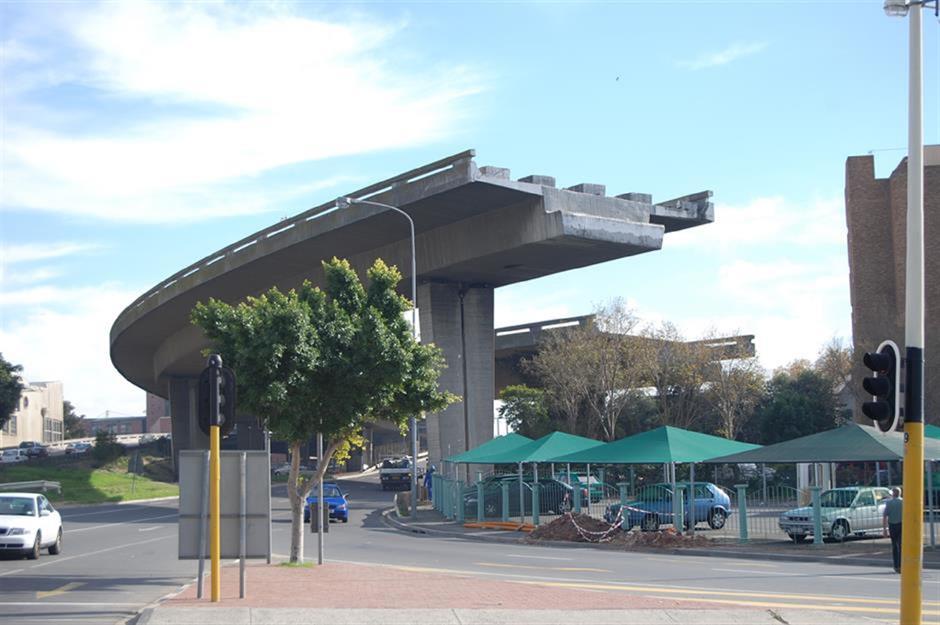
Work on the unfinished Foreshore Freeway Bridge in Cape Town began back in the early 1970s. The aim was to reduce traffic congestion in the city, but in 1977 the construction came to a standstill and has never been resumed. Official sources claim the bridge was abandoned because of a lack of funds.
However, some people have speculated that a shop owner refused to sell his premises, while others believe a mistake in the construction process meant that the ends of the bridge wouldn't fit together.
Teufelsberg, Berlin, Germany
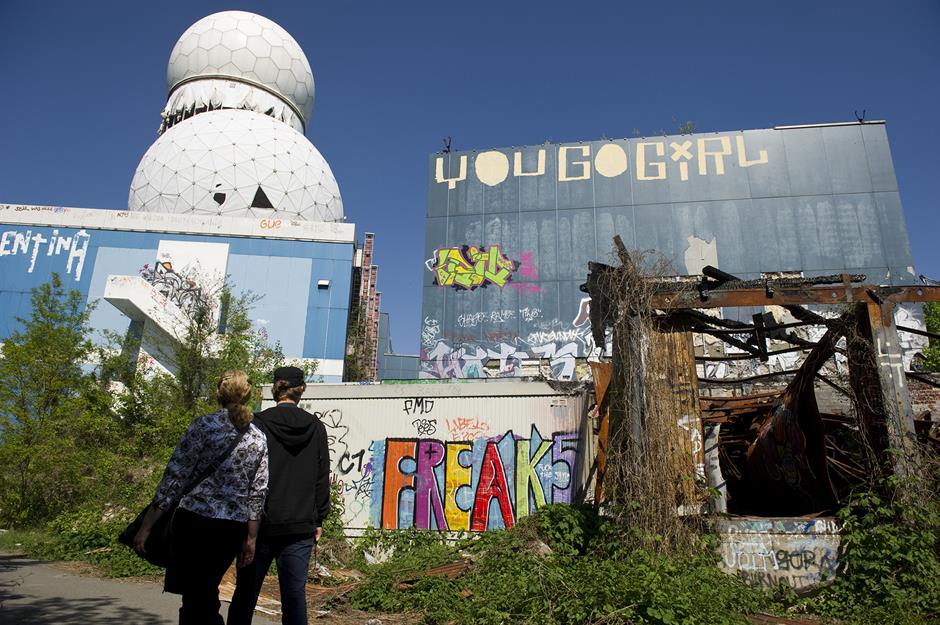
Teufelsberg, meaning "Devil's Mountain" in German, is an artificial hill overlooking Berlin that houses a Cold War-era US listening post. Built after World War II using rubble from the devastated city, the hill soon housed huge antennas and radomes (radar domes) that helped US forces intercept communications from the Eastern Bloc. It's possible to take a tour of the abandoned site.
Letchworth Village, New York, USA
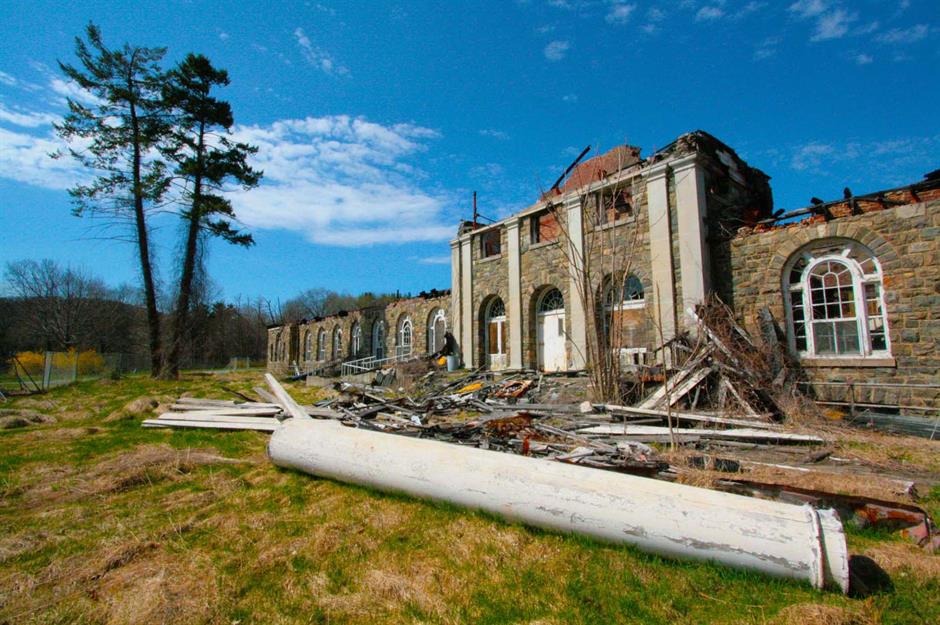
Letchworth Village, north of New York City, was built in 1911 as a residential institution for adults and children with mental and physical disabilities. At its peak, it housed 2,000 patients across more than 130 buildings. In 1950, an experimental polio vaccine was successfully tested here on an eight-year-old boy, which subsequently led to its widespread roll-out.
But reports of poor conditions, improper care, and abuse dated back decades and it closed permanently in 1996.
Kymlinge Station, Stockholm, Sweden
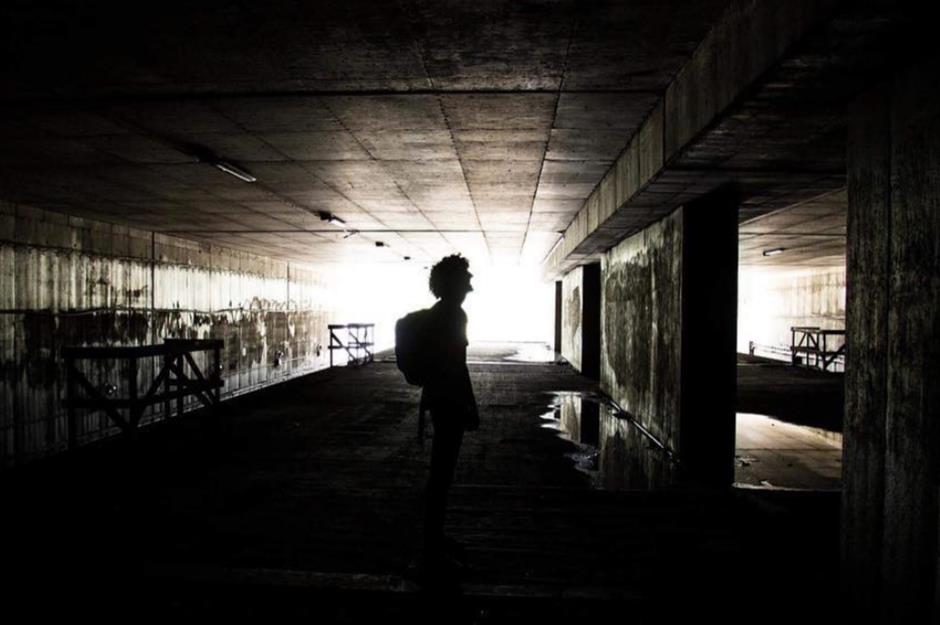
Urban legend has it that the Silverpilen "ghost" train still haunts this disused metro station. Kymlinge Metro Station, near Stockholm, was built in the 1970s as part of wider urbanisation efforts around the Swedish capital, yet construction on the near-complete station stopped because the government decided to preserve Kymlinge's natural surroundings.
Since then, trains on Stockholm's Blue Line have passed through without stopping. However, although it's not been used in nearly 50 years, construction is technically just on hold indefinitely.
2008 Olympics sites, Beijing, China
Beijing hosted the 2008 Summer Olympics and infamously bulldozed large parts of the city for purpose-built venues and evicted some 1.5 million residents, only for the sites to fall into disuse afterwards. While some of the sites were repurposed for the 2022 Winter Olympics, others such as the beach volleyball stadium are still deserted.
These 2008 Olympic mascots lie abandoned in a wooded area behind a shopping mall that was never completed.
Power Plant IM, Charleroi, Belgium
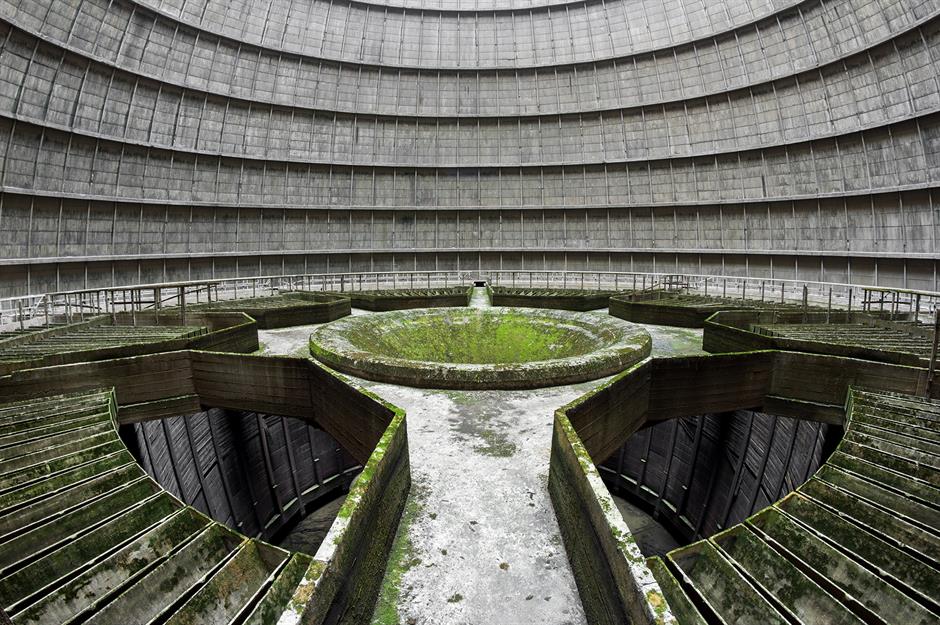
Built in 1921, Power Plant IM in Charleroi was one of the biggest coal-fired power plants in all of Belgium. Despite several modifications over the years, the plant and its massive cooling tower were closed down in 2007 after concerns over the level of its carbon emissions. It's reportedly been earmarked for demolition but continues to stand empty in the meantime.
Sathorn Unique Building, Bangkok, Thailand

Bangkok's Sathorn Unique Tower was about 80% complete when construction ground to a halt during the Asian financial crisis of 1997. Now known as the "Ghost Tower", the 607-foot skyscraper was supposed to become a series of luxury flats but largely plays host to urban explorers.
It stands in stark contrast to its more glamorous sister, the State Tower, home to the Sky Bar and topped by a glimmering dome. Residents say rubbish rains down from the vacant floors when storms hit.
Cincinnati Subway, Cincinnati, USA
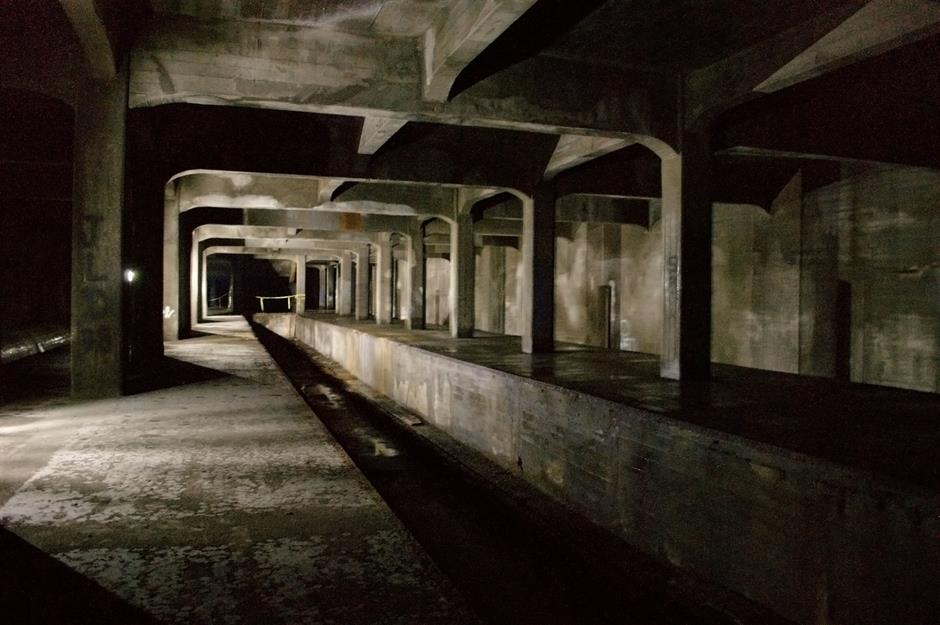
The Cincinnati Subway is a series of tunnels and platforms forming part of an unfinished mass transit system. Construction began in 1920 and a two-mile stretch of the subway was completed by 1923 – yet the budget had been blown and, in 1926, the city’s Mayor took over the project, announcing another $10 million would be needed to complete it. The dawn of the Great Depression in January 1929 made such proposals impossible.
Despite several plans to revive the tunnels, they remain unused apart from by urban explorers and the odd tour group.
Sutro Baths, San Francisco, USA
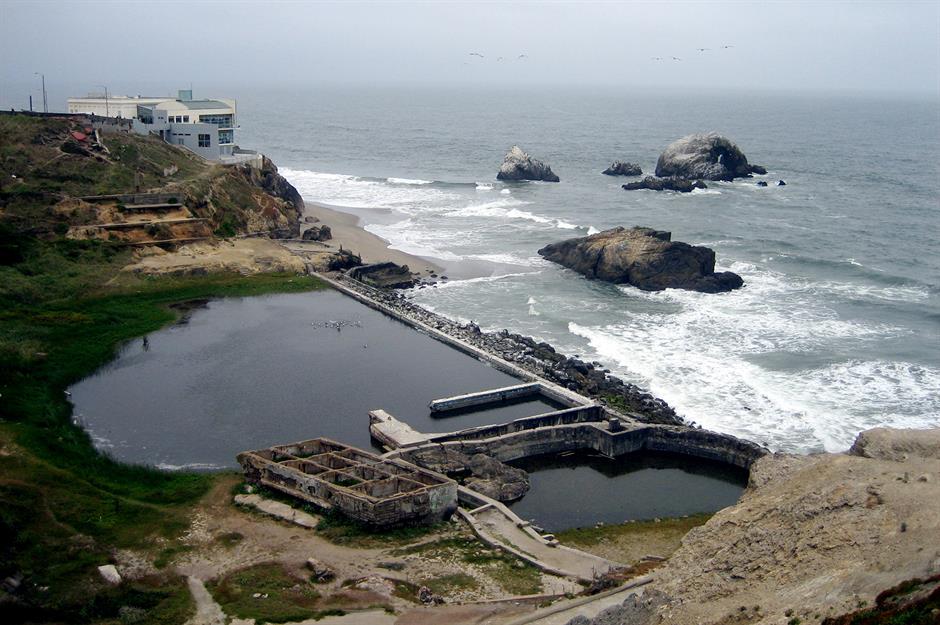
San Francisco's Sutro Baths were built by Adolph Sutro near the fashionable resort of Cliff House and opened to the public in March 1896. The idea behind the enormous glass structure was to create an inexpensive swimming site for 10,000 people at a time, with the Pacific Ocean at high tide filling all seven pools with saltwater in an hour.
But the baths lost popularity over time and eventually burnt down in a fire in 1966. The ruins are now part of the Golden Gate National Recreational Area.
Kelenföld Power Station, Budapest, Hungary
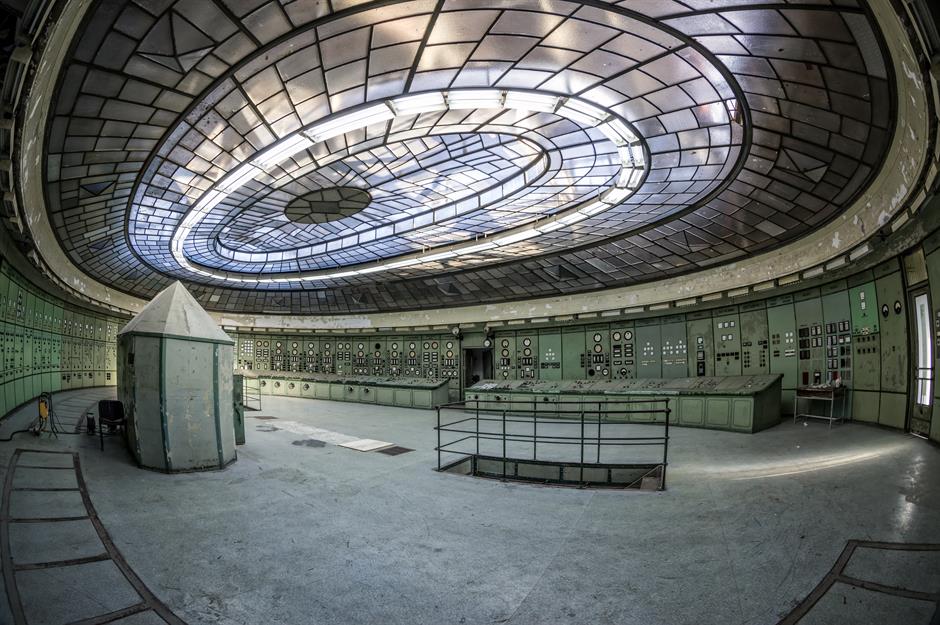
Complete with a stunning Art Deco glass ceiling, it's no surprise that Kelenföld Power Station in Budapest attracts design-savvy explorers. One of the most advanced plants of its kind when it opened in 1914, it provided power to the city of Budapest until 2007, when it went into private ownership and has since been left semi-abandoned. It's registered as a protected site under Hungarian law, which means it can't be torn down or restored, and has been left to weather the elements.
SS Ayrfield, Sydney, Australia
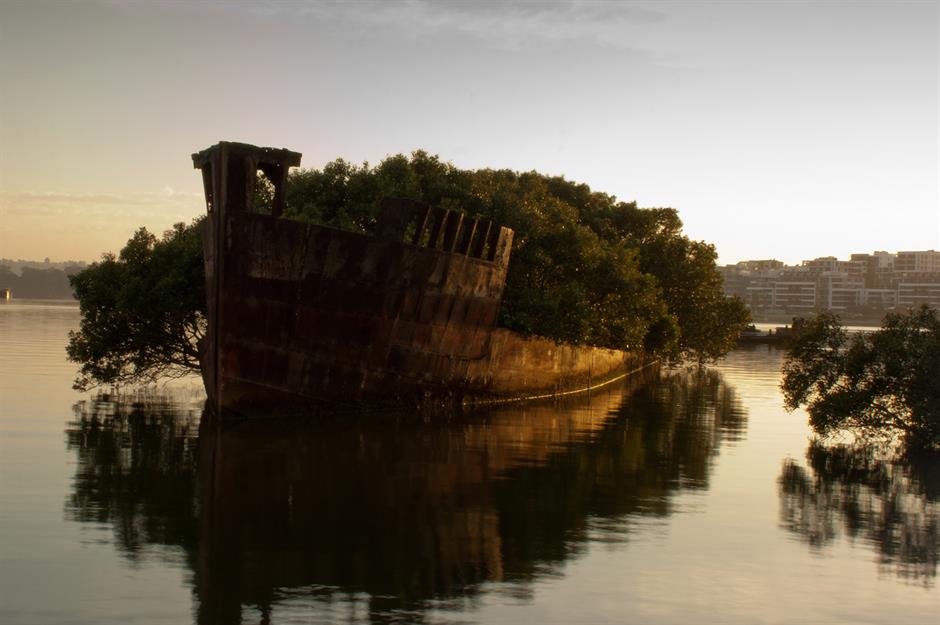
Built in the UK in 1911, SS Ayrfield now serves out the rest of its days as a "floating forest" on the other side of the world in Sydney's Homebush Bay. It served as a collier (cargo ship) and transported supplies for US troops in the Pacific during World War II. In 1972 it was brought to the bay to be dismantled.
But shipyard operations in Homebush soon ceased and SS Ayrfield, along with several other ships, were left to rot. Nature has since overtaken the ship, with mangroves slowly breaking down the hull.
Nam Koo Terrace, Hong Kong
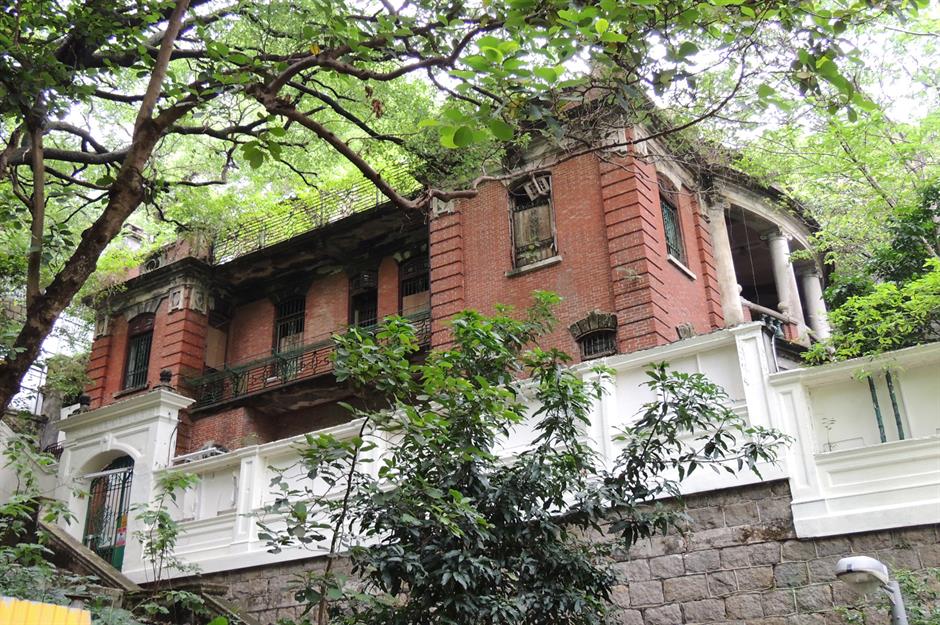
Derelict mansion Nam Koo Terrace is known as Hong Kong's most haunted building. The Grade I historic building in the Wan Chai area was built between 1915 and 1921 for a wealthy Singaporean merchant. It was evacuated during the Japanese occupation of World War II and remained vacant for decades.
It was eventually acquired by property company Hopewell Holdings in 2008, although it stands empty to this day.
Aldwych Tube Station, London, UK
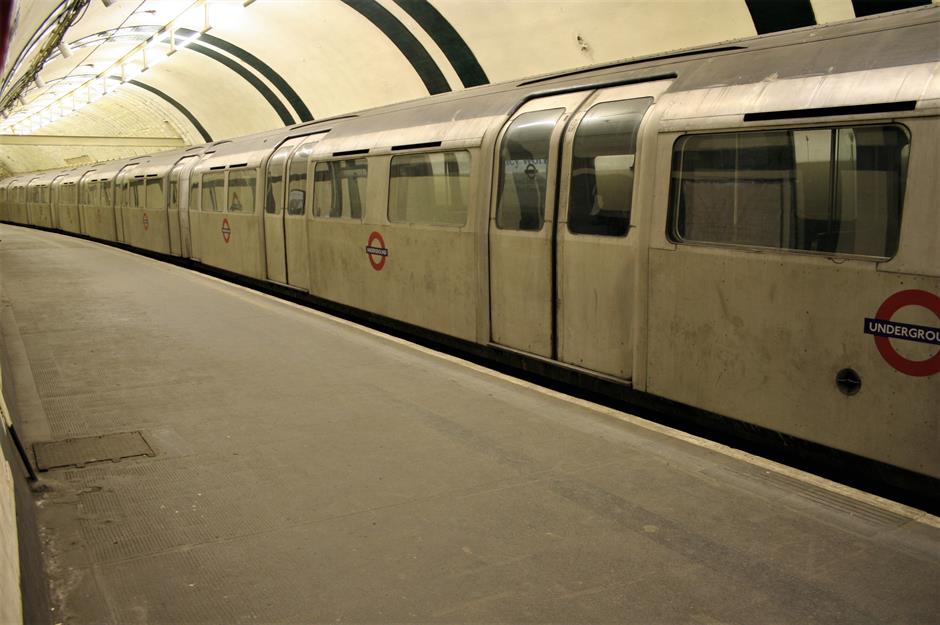
London's Aldwych underground (Tube) station opened to the public in 1907 but was never used as intended and finally closed down in 1994. The station on The Strand was used to store valuable artworks from London's museums and galleries during both World War I and II, and also served as an air raid shelter during the Blitz.
In recent times, it's occasionally been used as a film and TV set, featuring in Sherlock (2014) and Fast & Furious 6 (2013), and is open for tours via the London Transport Museum.
Astrodome, Houston, USA
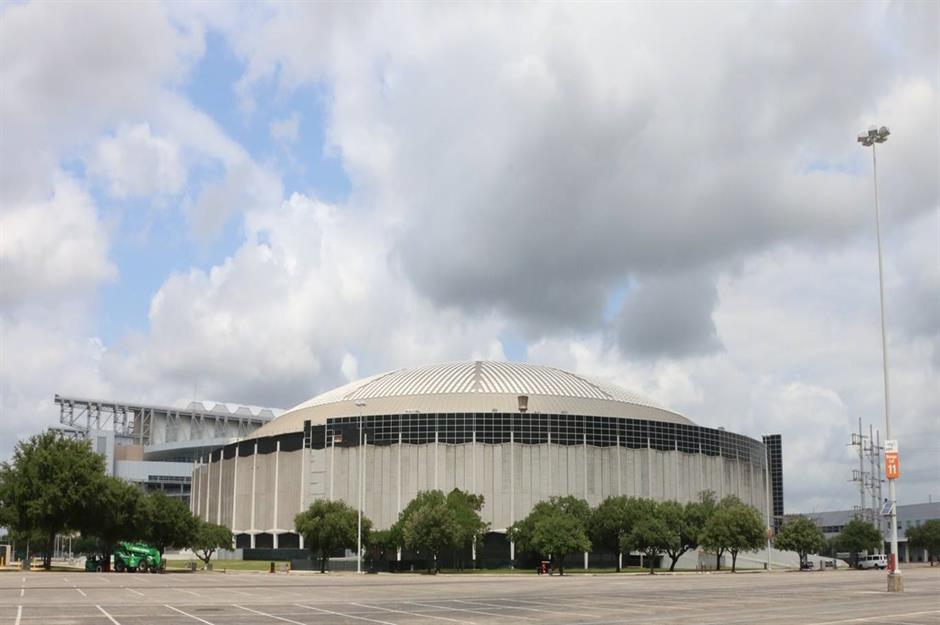
Houston's Astrodome was seen as ultra-futuristic when it first opened in 1965. It was the first domed, air-conditioned indoor stadium, as well as being the first major sports stadium to use AstroTurf. Locals even jokingly nicknamed it the “Eighth Wonder of the World”.
The late-Modernist building was designed to seat 66,000 American football and baseball spectators, yet the ageing sports venue has not been used since 2009. Parts of the building were demolished in 2013, with the rest listed on the National Register of Historic Places the following year.
Yongma Land, Seoul, South Korea
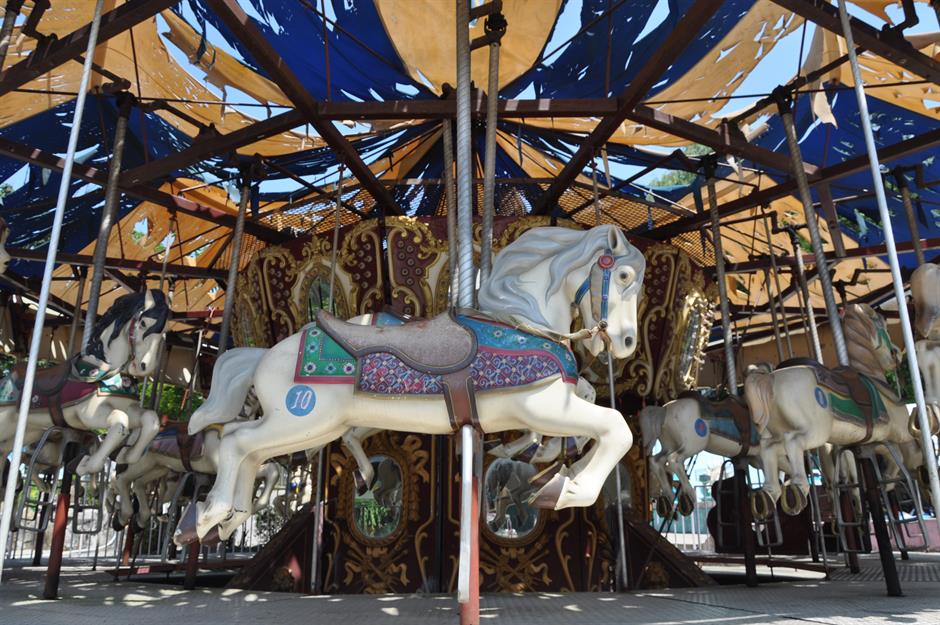
Seoul's abandoned Yongma Land opened as a family-friendly theme park in the early 1980s but struggled to compete against its more successful neighbour Lotte World, eventually closing in 2011. Visitors can pay a small fee to enter the derelict site, which is largely frequented by Instagrammers and couples posing for wedding photo shoots.
Petite Ceinture, Paris, France

The Petite Ceinture is an abandoned railway line, nearly 20 miles long, encircling the city of Paris. It was built in 1851 and ran as a passenger and freight service until the mid-1930s, yet the arrival of the Metro hastened its decline, although freight continued to use it until 1993.
Much of the largely intact disused railway track has since been turned into public space but large sections remain abandoned.
Silo #5, Montreal, Canada
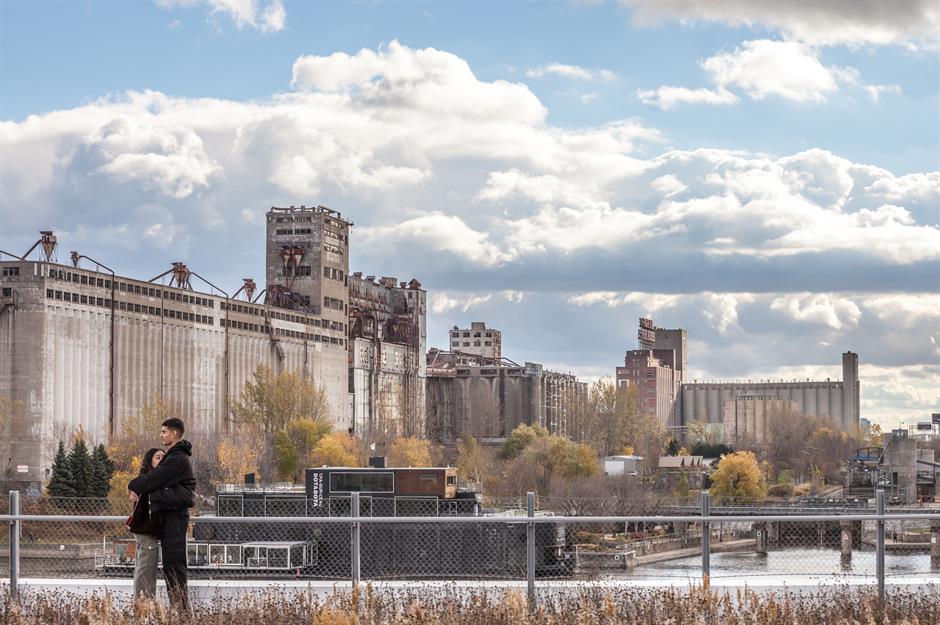
Silo #5 in Montreal's Old Port was built in four phases between 1906 and 1958 and is the last vestige of the city's 20th-century grain exportation. The building on Pointe-du-Moulin is owned by the Canada Lands Company and is made of up three distinct parts connected by aerial galleries.
It's been abandoned since 1996, but the Canadian Government issued a request for proposals for redeveloping the former grain elevator and surrounding site. Proposals included a request to turn the area into a mixed-use retail and residential district, according to Daily Hive in 2019, but it's not clear whether the plans were ever approved.
Old Changi Hospital, Singapore
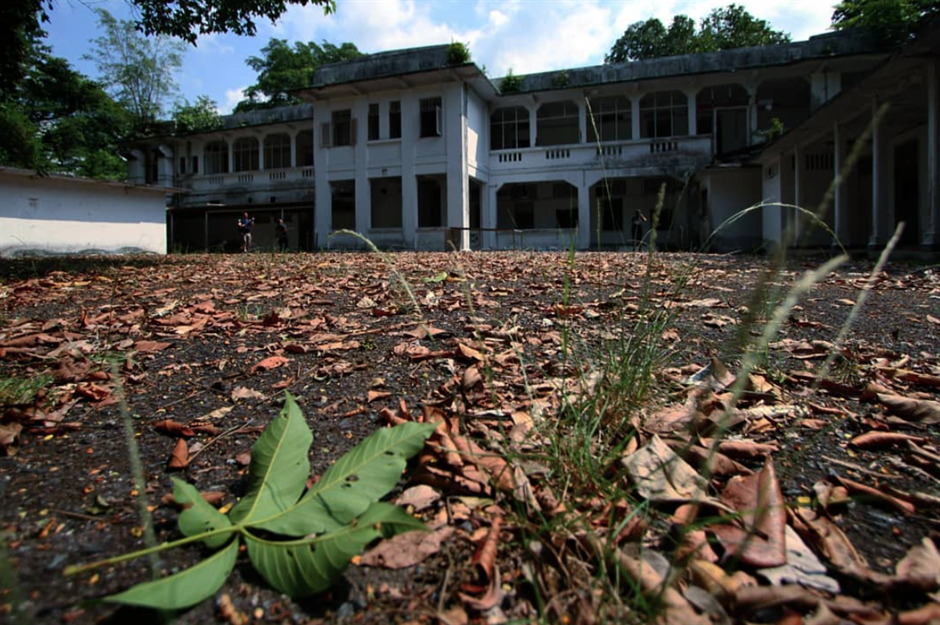
Old Changi Hospital in Singapore has been abandoned for more than two decades, and a number of ghost stories and even pictures of supposed sightings have emerged, cementing its reputation as one of the city-state's most haunted places. This is hardly a surprise, given its dark past.
Built by the UK government in the 1930s, it was used by the Japanese military police to hold more than 500,000 Allied prisoners of war during World War II. After Singaporean independence in 1965, it became a hospital for Commonwealth armed forces before eventually closing in 1997.
Kruunuvuori, Helsinki, Finland
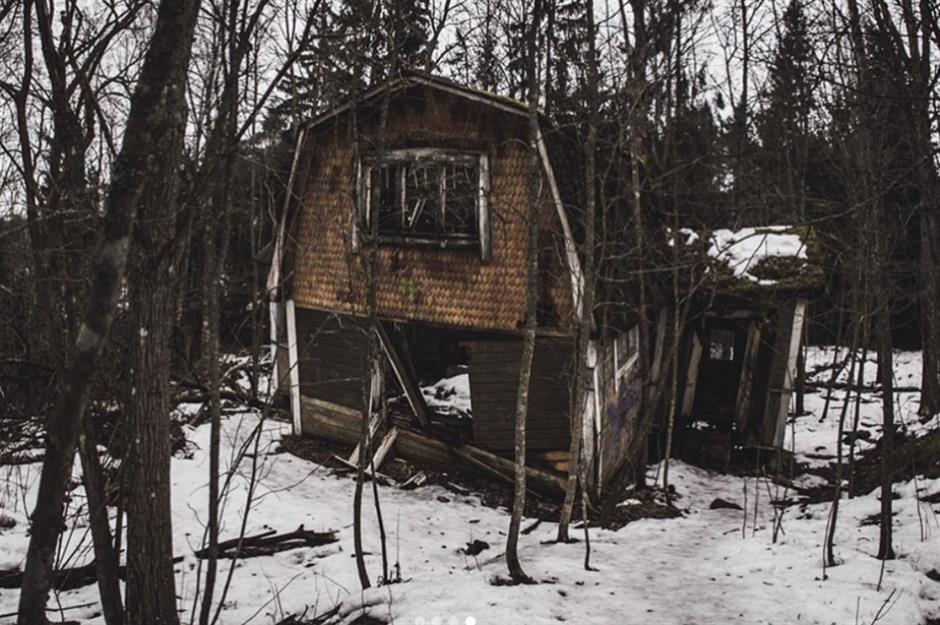
The once-wealthy Helsinki neighbourhood of Kruunuvuori once played host to an array of manors, villas and holiday homes for the Finnish capital's elite. But the country's economy floundered after World War II and many of the former holiday homes were left abandoned. Today, the site has largely been left to fall victim to the ravages of time and nature.
Lee Plaza Hotel, Detroit, USA
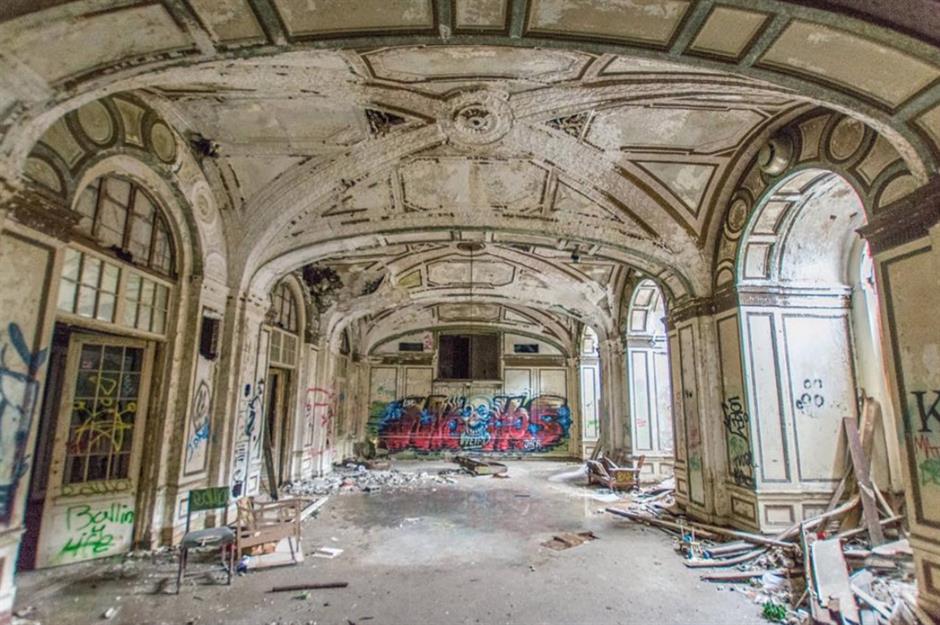
The Lee Plaza in Detroit opened in the late 1920s as an apartment building with hotel-like facilities. But the site and its owner were hit by the Great Depression and it was eventually bought by the city in 1969, before being turned into social housing for elderly people. The Art Deco landmark was eventually closed altogether in 1997.
The building still awaits a saviour, though proposals for the site are reportedly being accepted on a rolling basis and work has now begun to remove parts of the exterior that aren't structurally sound.
Izmaylovo Kremlin, Moscow, Russia
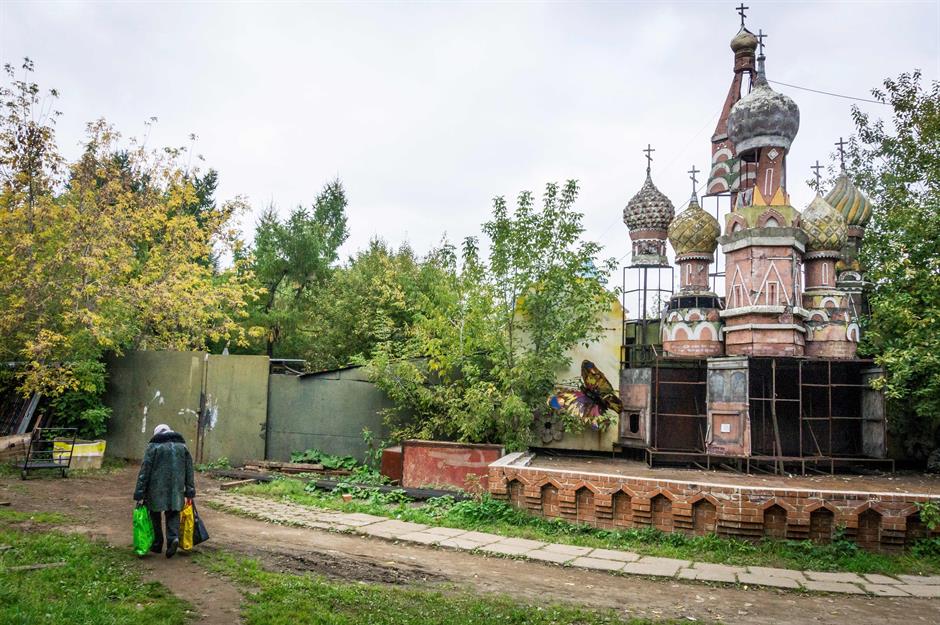
This abandoned model of St Basil's Cathedral can be found at the (other) Kremlin in the Izmaylovo District of Moscow, a wooden complex built in 2007 as a cultural centre, harking back to traditional Russian architecture and fairy tale depictions of Old Russia.
The theme park and nearby flea market are still open and popular, but certain monuments, such as this one, have been left to decay.
Griffith Park Zoo, Los Angeles, USA
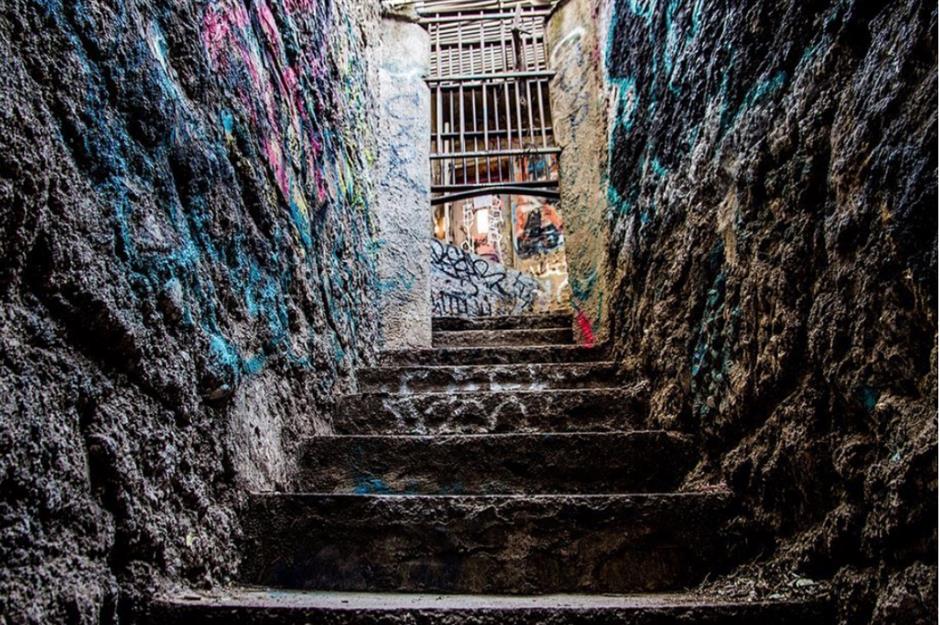
Griffith Park Zoo in Los Angeles opened in 1912 and was popular for over 50 years. But as the city grew, so did criticism of the zoo for its enclosures being too small. It eventually closed in 1966 when the Los Angeles Zoo opened nearby, with some of the animals reportedly walked down the road to the new attraction.
Today, it's been turned into an off-piste picnic site, where visitors can enjoy their lunch in a monkey cage or lion's enclosure.
APA Tower, Vienna, Austria

The so-called APA Tower in Vienna's largely upmarket 19th district is named after the Austria Press Agency, which it housed until 2005. The high-rise ruin, once known as the International Press Centre, was sold in 2012 to architect Heinz Neumann but none of his plans for the building were ever realised.
Tyrolean investor René Benko acquired it in 2021 but it's now being reported that the billionaire's property empire has come crashing down. With Benko's holding company currently restructuring, the future of the APA Tower is hanging in the balance.
Malcha Mahal, Delhi, India
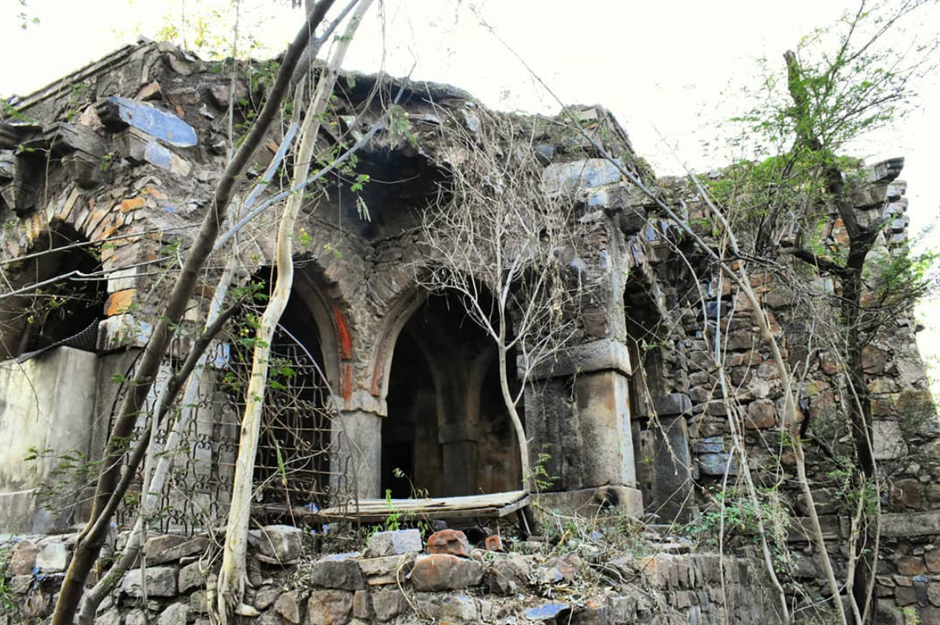
The Malcha Mahal, a 14th-century hunting lodge hidden in the depths of a thick forest just outside New Delhi, India, has long been surrounded by ghost stories. It's the site in which the body of reclusive prince Ali Raza, a descendant of the royal Oudh family who had lived there since the 1980s, was mysteriously discovered in 2017, with little understood about the cause of his death.
Although all surviving residents have died, some of their well-worn belongings remain scattered around the site. 'Haunted walks' around the abandoned site began earlier this year.
Steinert Hall, Boston, USA
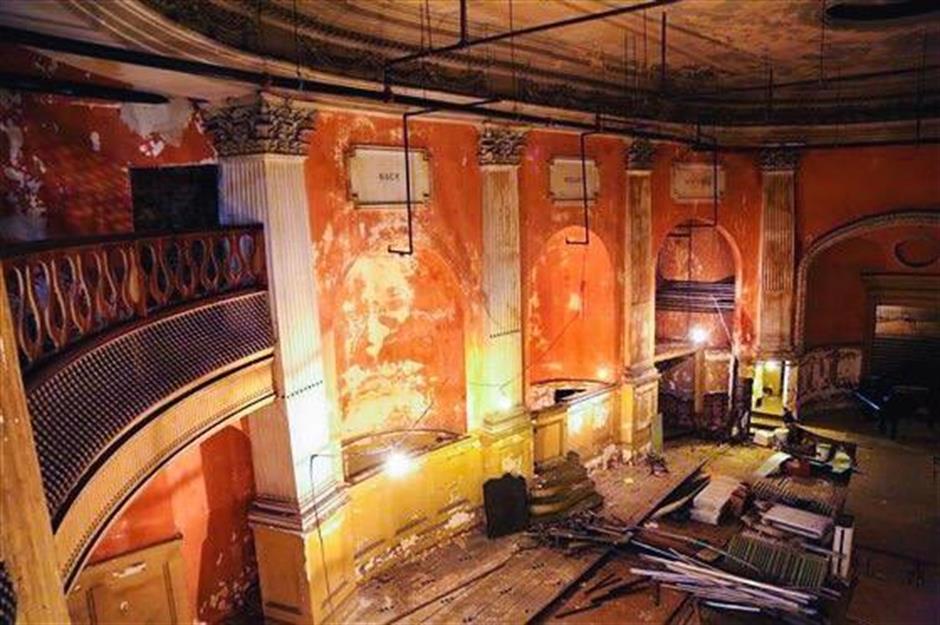
Steinert Hall's subterranean auditorium was once the centre of Boston's theatrical scene before new fire safety laws forced it to close its doors in 1942. Hidden four floors below the M Steinert & Sons piano store, the concert hall originally opened in 1896 and became known for its near-perfect acoustics.
The concert hall fell into disrepair, and the piano store which shares its name has since moved to a new location. Plans to renovate the auditorium were announced in 2015 but it's unclear how much progress has been made, so Steinert Hall remains silent – for now.
Now discover the sad stories behind America’s abandoned shopping malls
Comments
Do you want to comment on this article? You need to be signed in for this feature